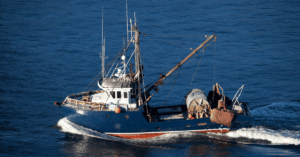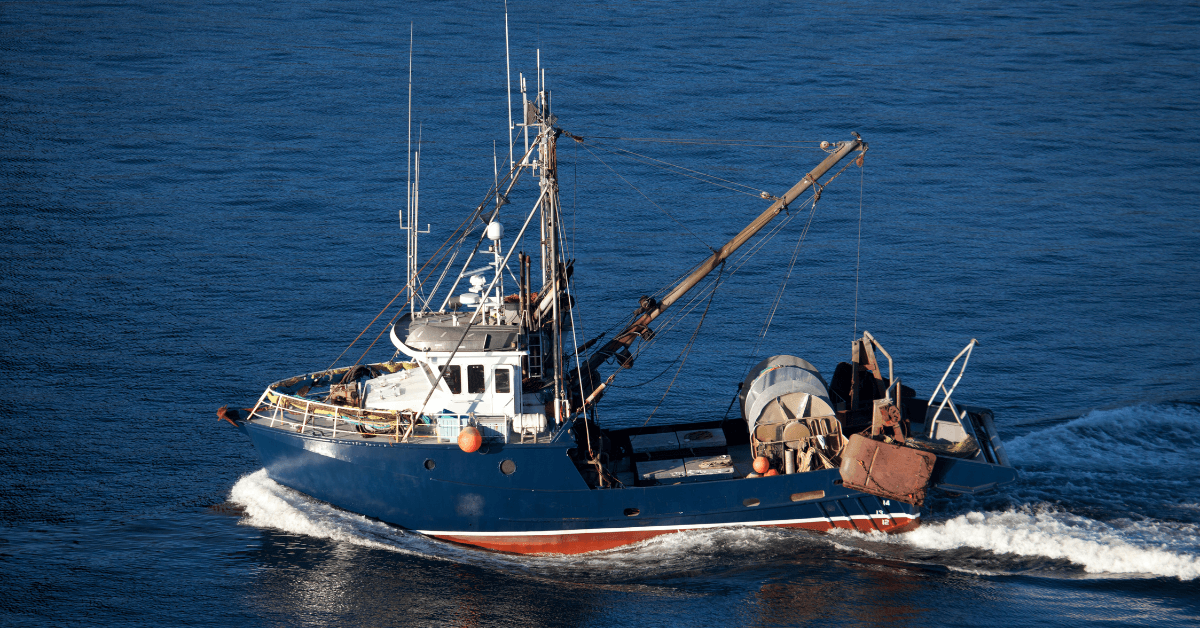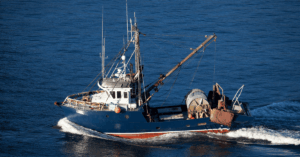
Boat Collides With Ship In Arabian Gulf, Tries Hitting Others, Says UKMTO
May 12, 2025
World’s First Biomethanol-Powered CTV Enters Offshore Wind Service
May 12, 2025

US President Donald Trump has signed a proclamation to once again allow commercial fishing in a marine monument off the coast of New England.
The area is known as the Northeast Canyons and Seamounts Marine National Monument, spanning nearly 5,000-square-mile (13,000-square-kilometre) zone southeast of Cape Cod, near the edge of Georges Bank.
It was declared a marine monument in 2016 by former President Barack Obama to protect deep-sea corals, whales, sea turtles, and other marine life.
Trump had previously opened the area to fishing in 2020 during his first term, but that decision was reversed in 2021 by former President Joe Biden, who restored the fishing ban to protect the ecosystem.
Now, with the new proclamation, commercial fishing will be permitted again.
A White House official stated that this action supports jobs, fishing communities, and the economy, particularly those who relied on access to this region in the past.
In response, the New England Fishermen’s Stewardship Association (NEFSA), based in Portland, Maine, praised the announcement. NEFSA pointed out that the 2021 ban shut down a major fishing area that once supported catches of squid, tilefish, tuna, red crab, and lobster.
The group described the reopening as a major boost for fishermen who have struggled with what they describe as excessive regulations.
Jerry Leeman, CEO of NEFSA, said that for years, tight rules have made it difficult for fishermen to earn a living and provide American-caught seafood to consumers. He argued that reopening the area is a step toward making the country’s natural resources more accessible.
Leeman criticised the original monument designation, calling it a symbol of poor fishery management. He said that in 2020, the New England Fishery Management Council had worked alongside NOAA to create a detailed, science-backed plan that allowed fishing while still protecting sensitive species and cold-water corals. That plan, he said, was dismissed when the monument was fully closed in 2021.
According to NEFSA, restoring access is a practical solution that can protect marine life while also keeping fishing viable. The group believes that stewardship and fishing can go hand in hand.
However, not everyone agrees. Marine scientists have expressed concerns over the ecological impact of the decision.
The New England Aquarium, supported by the U.S. Fish and Wildlife Service, recently carried out an aerial survey over the monument and observed over 600 marine animals, including bottlenose dolphin calves and a humpback whale calf. The aquarium shared its findings on Facebook.
Peter Auster, an emeritus research professor in marine sciences at the University of Connecticut, said that the monument is a key site for studying how human actions affect marine ecosystems. He noted that without areas fully protected from industrial activity, it’s hard to understand the full impact of human use elsewhere in the ocean.
This is the second marine monument Trump has reopened to fishing since beginning his second term in January. On April 17, he signed an order allowing commercial fishing in 400,000 acres of the Pacific Remote Islands Marine National Monument, which had previously been off-limits.
Despite the support from some fishing groups, the fishing industry has faced uncertainty in recent months. A regulatory freeze introduced earlier this year disrupted the U.S. fishing sector.
According to previous reporting by Reuters, the freeze delayed the opening of certain East Coast fisheries and contributed to the overfishing of Atlantic bluefin tuna, creating confusion in an industry that generates around $320 billion.
References: Reuters, nefishermen
Source: Maritime Shipping News


